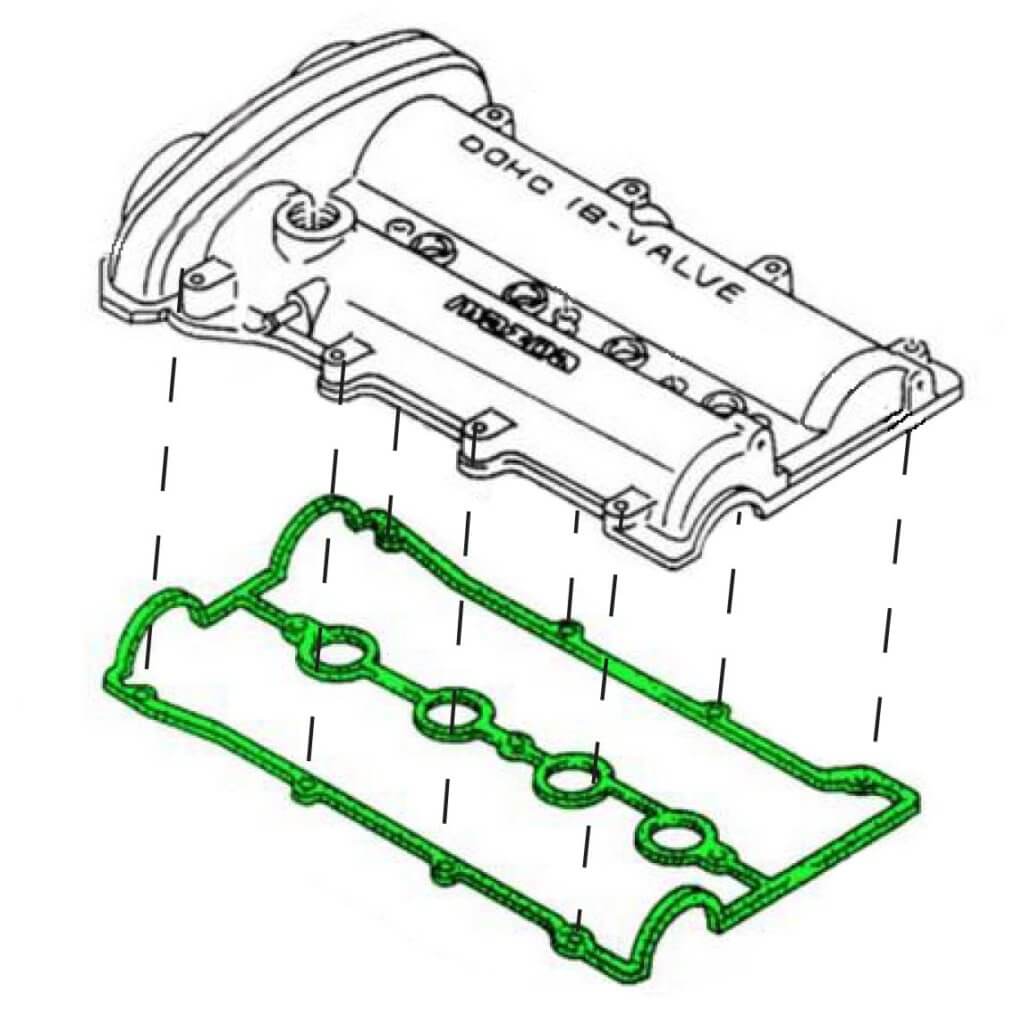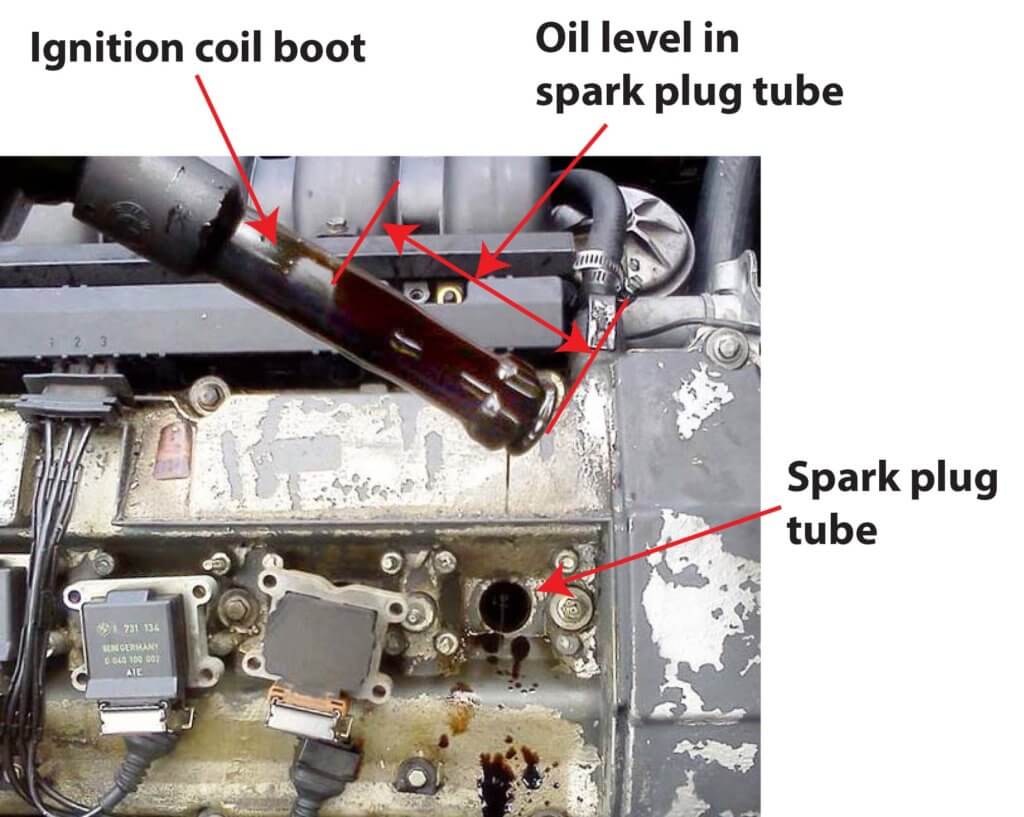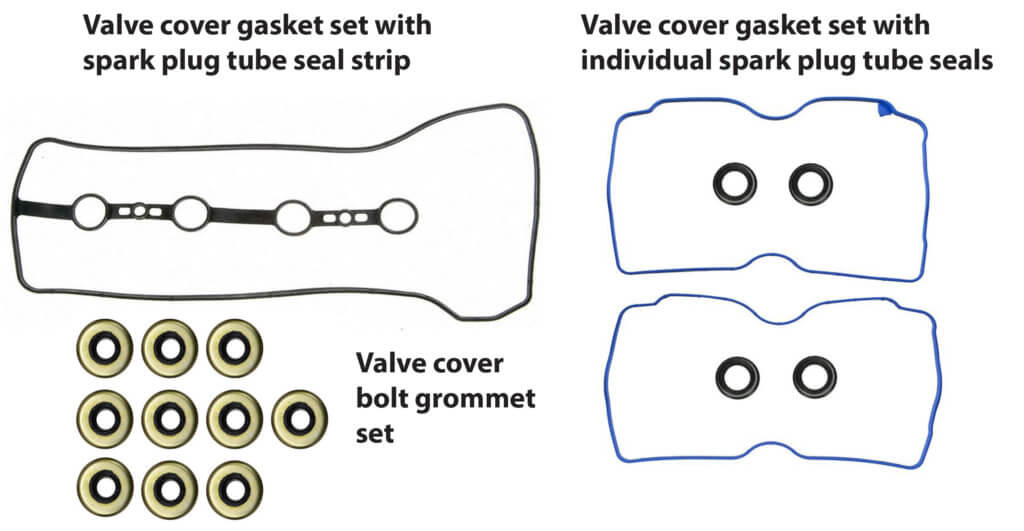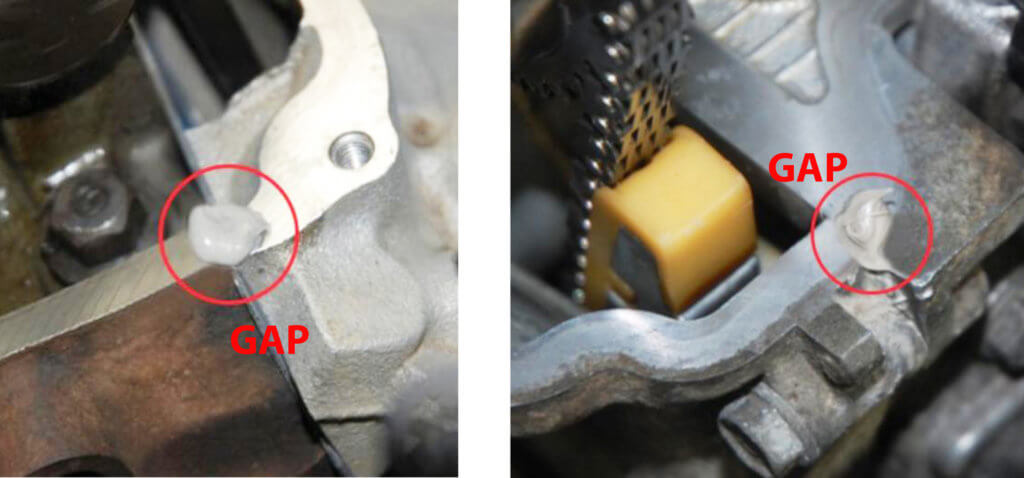Valve Cover Gasket Replacement: A Step-by-Step Guide
Learn how to replace a valve cover gasket
The valve cover sits on the top of each cylinder bank (in a V-style engine) or right on top of an inline engine. The valves, rockers, and camshaft (on an overhead cam engine) are constantly rotating and splashing oil all over the place. Over time and with heat, the gasket can leak. The only way to fix the leak is with a valve cover gasket replacement. It’s not a difficult job on a 4-cylinder engine but can be somewhat challenging on a V-6 or V-8 engine. The valve cover gasket seals the gap between the valve cover and the cylinder head.

Valve cover and gasket from a dual overhead cam four-cylinder inline engine.
In older vehicles, the gasket was made from a combination cork/rubber composite. However, in most modern cars, the valve cover gasket is made of neoprene rubber, silicone or simply room temperature (RTV) vulcanizing sealer.
What causes valve cover gaskets to fail
Age, heat, and contaminants.
Stop leak products, engine flushing chemicals, and unapproved oil additives.
Cork valve cover gaskets fail most often
With heat and age, the cork shrinks causing voids between the valve cover and cylinder head. The resulting leak causes oil to drip down the side of the engine.
Neoprene valve cover gaskets
Over time and under higher temperatures, neoprene gaskets harden, become brittle, and crack, shrink, and leak.
Silicone valve cover gaskets and RTV sealer
Generally speaking, silicone valve cover gaskets and RTV sealers don’t deteriorate unless they’re exposed to solvents or stop-leak products. When a leak occurs with a silicone or RTV gasket, the cause is often improper valve cover bolt torque or gasket contamination.
Spark plug tube seals
Many overhead cam engines locate the spark plug right in the center of the cylinder head. In those engines, a spark plug tube extends from the head up to the valve cover. A rubber seal is used to prevent the oil splash from entering the tube. Those tube seals are often made of neoprene, so they fail over time and leak oil into the spark plug tubes. The accumulation of oil causes spark plug misfires.

Valve Cover Gasket sets and grommets
Valve cover gaskets can be sold as a set or as individual components. In some designs, the spark plug tube seals are either attached to the gasket or come in a continuous strip. In other designs, the tube seals are separate. Unless otherwis e stated as included in the set, the bolt grommets are often sold separately. You should replace the bolt grommets when you replace the valve cover gasket because they deteriorate the same as the gasket itself.
e stated as included in the set, the bolt grommets are often sold separately. You should replace the bolt grommets when you replace the valve cover gasket because they deteriorate the same as the gasket itself.
Tools you need to replace a valve cover gasket
3/8″ drive metric socket set
RTV sealant (not always used, but need to have it on hand in case you do)
Aerosol brake cleaner
Rags
Step-by-step guide to replacing a valve cover gasket
1) Remove the valve cover following the instructions in your shop manual. Keep track of longer valve cover bolts; they must go back in the same location.
2) Remove the old gasket and seals, making sure you notice how the seals are installed.
3) Clean the inside of the valve cover with brake cleaner. Wipe dry. Clean the mating surface on the cylinder head.
4) Remove any oil from the spark plugs and tubes and spray with brake cleaner and compressed air to remove all traces of oil. Clean oil off the ignition coil boot. Re-apply a small dab of dielectric grease to the inside of the ignition coil boot.
5) If the replacement gasket is silicone, it must be installed dry. DO NOT USE ANY gasket adhesive or RTV on the gasket except in these locations:

Apply a SMALL dab of RTV on gaps and in sharp corners.
• RTV should only be used on the corners of the gasket and/or stepped casting areas that have a gap. Using a small amount of RTV will fill in those areas to ensure a leak-free assembly. Apply to the engine, not the gasket in those areas.
WARNING: Applying RTV to the entire silicon gasket sealing surface will cause the silicone gasket to slip out of place as you tighten the valve cover bolts. Trust me on this. The vast majority of valve cover gasket leaks after replacement are due to using RTV on the silicone gasket sealing surface. The only exception to this is if the timing case
6) If the replacement gasket is neoprene or cork, you may use a small dab of RTV in the corners of the gasket to hold it onto the cover as you replace it.
7) Once the gasket and cover are in place, install the cover bolts and tighten to spec, starting in the center of the cover and working your way out while alternating sides
Avoid these common DIY mistakes when replacing a valve cover gasket
OVER-tightening the valve cover bolts. The specs are listed in INCH/LBS, not foot/lbs. If you over-tighten the valve cover bolts, they’ll break.
Not cleaning all the oil off the gasket mating surface. This causes the gasket to slip as you install it.
Stretching the gasket as you place it in the groove on the valve cover gasket. Just press it in place; don’t stretch it.
Not replacing the bolt grommets. If you reuse old grommets, they’ll leak.
Valve cover gasket replacement cost
Valve cover gasket replacement cost on a four-cylinder engine
On a typical four-cylinder engine the cost to replace a valve cover gasket is around $250-$300. The labor is typically around 1.3 hours and a gasket set is around $60.
Valve cover gasket replacement cost on a 6-cylinder or 8-cylinder “V” engine
The cost varies quite a bit depending on whether the engine is a transverse mount or straight mount. For example, the valve cover replacement cost for a 2017 Acura 3.5 liter engine runs around $250-$400. Labor is 2.2 hours and the gaskets cost around $80.
The valve cover gasket replacement cost on a 2015 Ford Explorer with a 3.5L engine runs around $980 to $1,100 due to the labor required to remove the right (2.8-hours) and the left bank (5.0-hours) valve covers.
©, 2021 Rick Muscoplat
Posted on by Rick Muscoplat